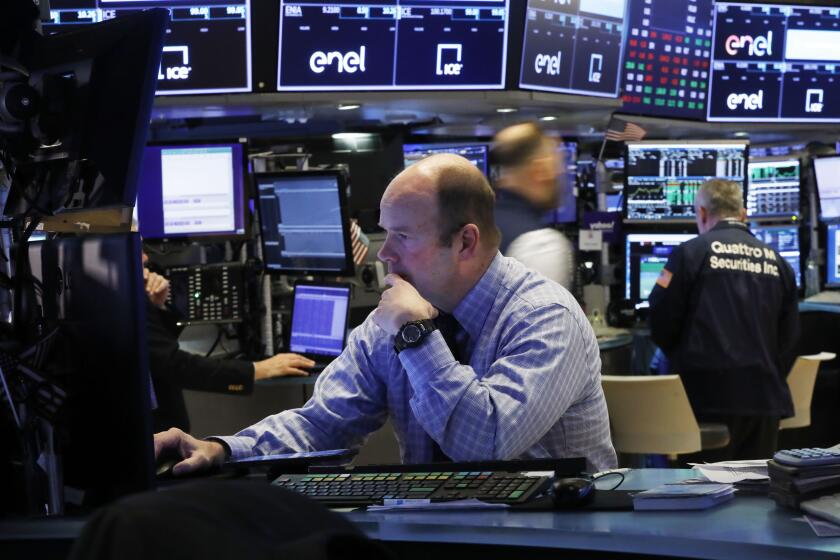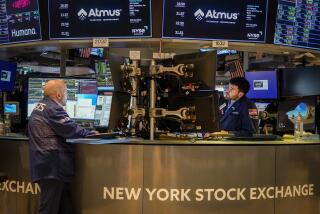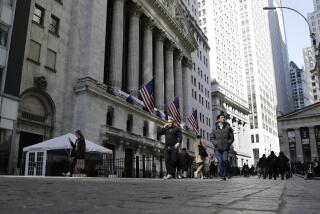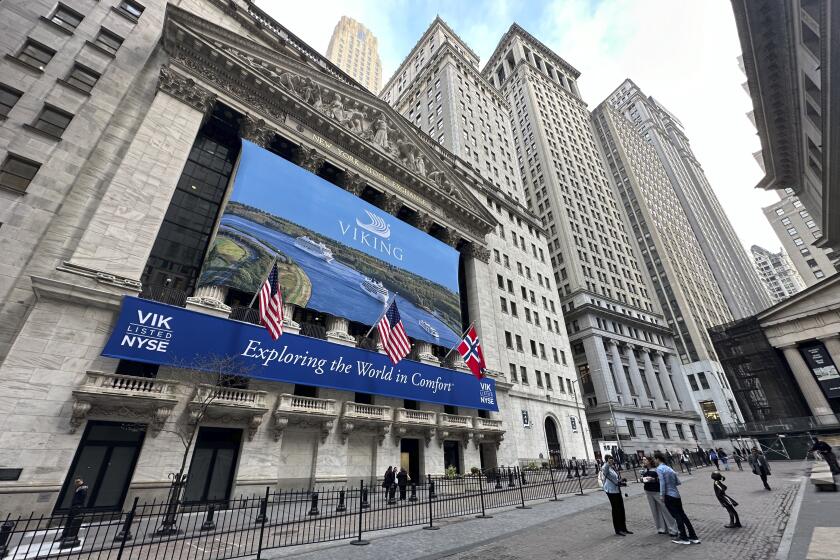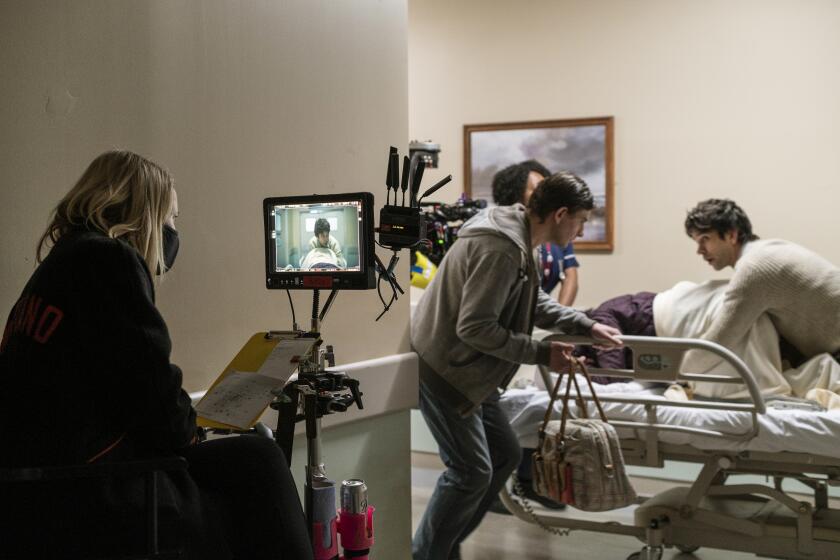Stocks dive on coronavirus fears. It’s their worst day since 1987
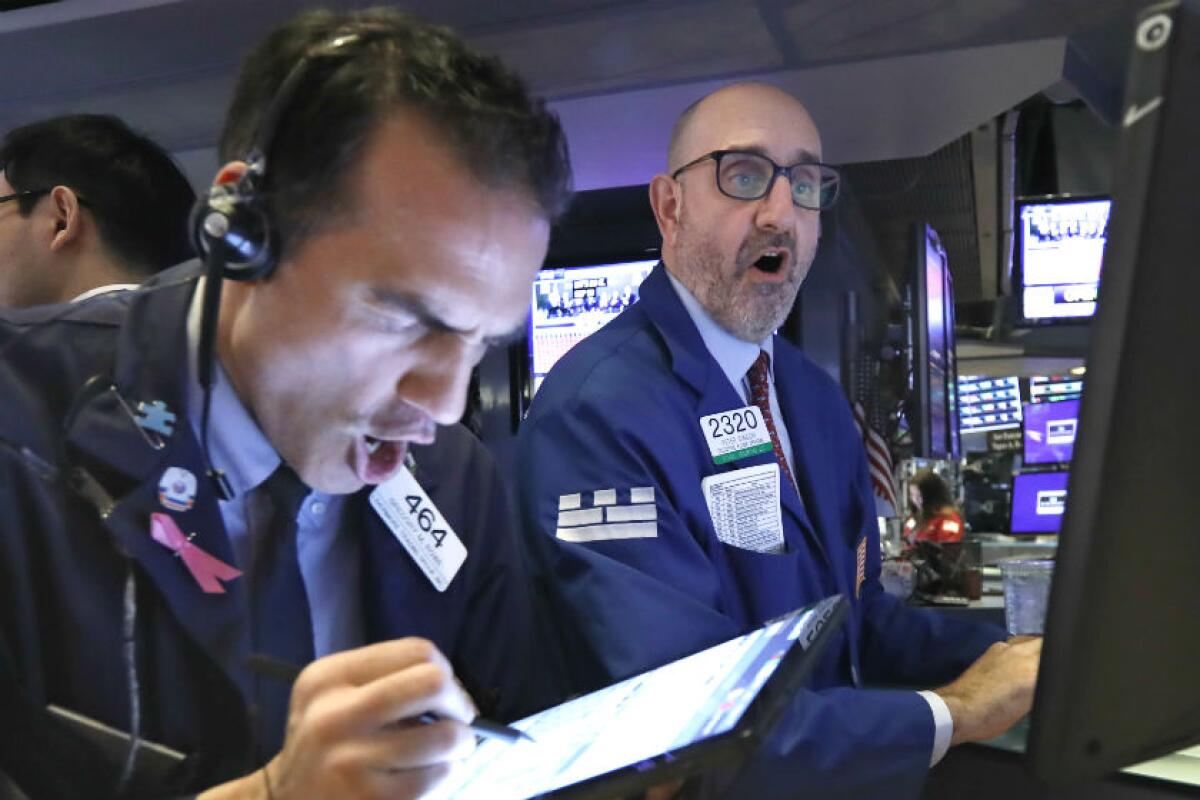
Coronavirus fears walloped stocks again Thursday, pushing the U.S. market to its biggest drop since 1987.
The Dow Jones industrial average sank about 10%, or more than 2,300 points. The Standard & Poor’s 500 index dropped about 9.5%, and the Nasdaq slid about 9.4%. All three indexes are now in a bear market — down substantially more than 20% from the record highs they set last month — and have wiped out most of the big run-up since President Trump’s inauguration.
The indexes started the day down sharply, then climbed back somewhat after the Federal Reserve said it would step in to the bond market to address “highly unusual disruptions” in trading of Treasury securities — but then took another turn lower.
European markets lost 12% in one of their worst days in history, even after the European Central Bank pledged to buy more bonds and offer more help for the economy.
With the record-setting bull market crashing to an end amid the coronavirus, there still may be some steps average investors can take to limit their losses.
The heavy losses came amid a cascade of cancellations and shutdowns across the globe — including Trump’s suspension of most travel to the U.S. from Europe — and rising worries that the White House and other authorities around the world can’t or won’t counter the economic damage from the coronavirus pandemic any time soon.
“The news just continues to get worse, and the travel ban puts an exclamation point on the weakness we’re going to see in global GDP and, in turn, the U.S.,” said Liz Ann Sonders, chief investment strategist at Charles Schwab. “We’re starting to get a sense of how dire the impact on the economy is going to be. Each day the news doesn’t get better, it gets worse. It’s now has hit Main Street to a more significant degree.”
On Wall Street, stocks fell so fast at the opening bell that they triggered an automatic 15-minute halt to trading for the second time this week. The so-called circuit breakers were first adopted after the 1987 crash, and until this week hadn’t been activated since 1997.
Trump often points proudly to the big rise on Wall Street under his administration and told a crowd at a rally last August that “whether you love me or hate, you gotta vote for me,” or else your 401(k) will go “down the tubes.” Just last month, the Dow was boasting a nearly 50% gain since he took the oath of office Jan. 20, 2017.
Now the Dow is clinging to a gain of about 7% since Trump’s term began, though it it’s still up nearly 16% since just before Trump was elected in November 2016.
A drop on Wednesday sent the Dow into a bear market — down 20% or more from a recent peak — for the first time in more than a decade. The S&P 500 joined it in bear market territory Thursday, ending the longest bull run in Wall Street history. Both indexes were at all-time highs just last month.
“This is bad. The worst and fastest stock market correction in our career,” Chris Rupkey, chief financial economist at MUFG Union, said in a research note overnight. “The economy is doomed to recession if the country stops working and takes the next 30 days off. The stock market knows it. Bet on it.”
In a somber prime-time address Wednesday night from the White House, Trump announced the new travel ban as well as measures to extend financial help to individuals and businesses hurt by the pandemic. But the travel restrictions represented another heavy blow to the already battered airline and travel industries, and the other measures did not seem to impress Wall Street.
“What markets are waiting for are efforts to contain the virus in a very aggressive way, ways we’ve seen in other countries,” said Nela Richardson, investment strategist at Edward Jones. “Short of that, nibbling around the edges — maybe doing something that can help a firm with a very short-term impact or help an employee — doesn’t hurt, but it’s not the bull’s-eye, and it’s not as targeted as the markets would like to see.”
Michael McCarthy of CMC Markets said: “The market judgment on that announcement is that it’s too little, too late.”
Among Thursday’s market moves:
— Travel stocks again were among the hardest hit. Norwegian Cruise Line, Royal Caribbean Cruises and Carnival all lost roughly a quarter third of their value. Another drop for United Airlines put its loss for the year at more than 50%.
— Oil continued its brutal week, with benchmark U.S. down to $31 a barrel.
— In Asia, stocks in Thailand and the Philippines fell so fast that trading was temporarily halted. Japan’s Nikkei 225 sank 4.4% to its lowest close in four years, and South Korea’s market lost 3.9%.
Perhaps more alarming were complaints in recent days by investors that trading in the Treasury market wasn’t working well. For reasons that weren’t immediately clear, traders said they were seeing surprisingly large gaps in prices being offered by buyers and sellers. That threatened to cause the market to seize up.
In a surprise move, the Fed said it would pump in at least $1.5 trillion to help calm the market and facilitate trading.
After earlier thinking that the virus could remain mostly in China and that any dip in the economy would be followed by a quick rebound, investors are seeing the damage and disruptions mount, with Italy locking itself down, the NBA suspending games and authorities in the U.S. and beyond banning large gatherings and closing schools.
For most people, the coronavirus causes only mild or moderate symptoms, such as fever and cough. For some, especially older adults and people with preexisting health problems, it can cause more severe illnesses, including pneumonia. The vast majority of people recover from the virus in a matter of weeks.
